Shipping currently accounts for almost 3% of global carbon emissions. In order to hit global net-zero targets by 2050 solutions like biofuels, green and blue hydrogen, as well as ammonia have been held up as alternatives to fossil fuels to be used in ships. But what if we could go back to the early stages of shipping, where the wind was used for sailing, but using current and upcoming technology? Could wind blow past biofuels and hydrogen as the best pathway to decarbonize shipping?
Several industries around the globe have been developing, improving, and changing to green technologies with the aim to neutralize carbon emissions in the next few decades. One of the more challenging ones is the shipping industry, which accounts for about 2.5% of total carbon emissions in the world, releasing 940 million tons of CO2 to the atmosphere every year. That shouldn’t be a shock given how dependent shipping is on heavy fuel oil (HFO) and combined with the fact that container ships carry more than 80% of world trade today. The current pandemic-related container ship backups in ports around the world isn’t helping.1
Currently, there are about 5,000 container ships sailing on our seas every single day and about 90% of these are powered by heavy fuel oil. A large ship can release more than 5,000 tons of sulfur oxide (SOx) pollution each year, which is dangerous for the environment and people. 2 3 4 5
But before diving into how wind may help to decarbonize the shipping industry, how did we reach this point?

The history of shipping and boats dates back to 4,000 B.C. in Egypt. The Nile river was vital for the survival of Egyptian communities and was largely used for transportation. 6 7
In the 15th century, Spain and Portugal started to build carracks, which were large sailing ships used for their expeditions. In fact, it was a carrack that first sailed around the world, from 1519 to 1522.
Ship improvements extended through the 19th century, when a bulkier but also faster ship design came up, the clippers. Tea clippers, which were used to carry … you probably guessed it … fresh tea and could reach a top speed of 20 knots (about 23 mph) in favorable wind conditions. Fun side note, that’s faster than today’s cargo ships.
The Industrial Revolution brought improvements to many sectors, including shipping. Steamships became popular, but they weren’t a good option for cargo transport because the fuel (coal) and the engine took too much space. In the 1950s, oil started to be used, which reduced the size of the fuel tanks and opened up more space for cargo. Since then, the use of this cheap but dirty fuel is where the environmental issues related to shipping began to increase, and it hasn’t been easy to it clean up. 6 7
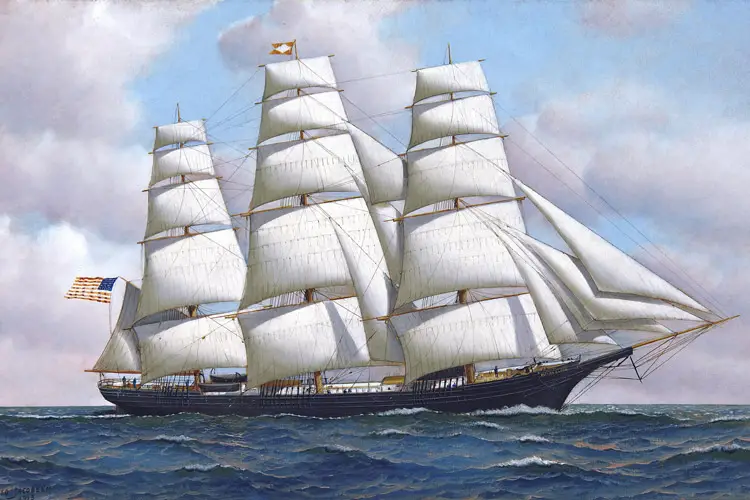
If we zoom out to today, we start see some alternatives to heavy fuel oil that have popped up to make ships greener. Things like hydrogen, ammonia, and biofuels … but is that the solution? What about taking a page from the past with good, old wind – remember, clipper ships were actually faster than today’s cargo ships – mixed with all the technology and know-how available today?
When it comes to wind power, we usually think of 3-bladed turbines dotting the horizon or giant sails on ships. But today there are several other methods, as I explored in my solid state wind energy video, and for shipping it’s no different.
The first wind propulsion technology that’s been considered for ships is Rotor Sails. They’re also known as Flettner rotors, which are vertical rotating cylinders invented by the Finnish Engineer Sigurd Savonius at the beginning of the 20th century. But they were named after Anton Flettner, a German aviation engineer, who sailed a rotor ship prototype in 1926.

Rotor sails harness wind power through the Magnus effect. According to this fluid dynamics principle, when the wind pushes the rotating cylindrical rotor perpendicularly, it generates a force in a right angle (90º) to the flow stream. When the wind is flowing laterally across the ship’s deck, perpendicular to the direction the ship is moving, the rotation speeds up one side of the cylinder while slowing down the other one. This creates lift, or thrust, in the same direction the ship is traveling, propelling it forwards. 8 9
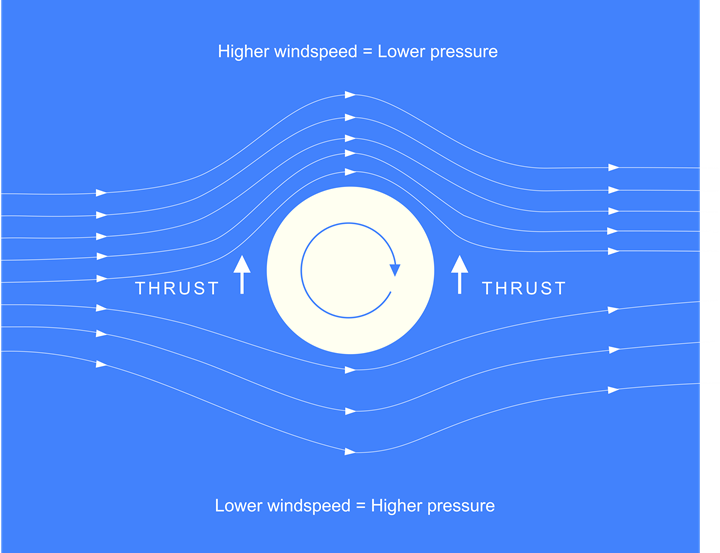
The Magnus effect explains why soccer players can bend a soccer ball’s path as well. When the player kicks the ball off-center, the ball spins. During the flight, as the ball spins, friction between the ball and air causes the air to react to the direction of spin. For example, if the player kicks the ball right of center, it spins counter-clockwise and the Magnus force acts left, so the ball curves to the left.
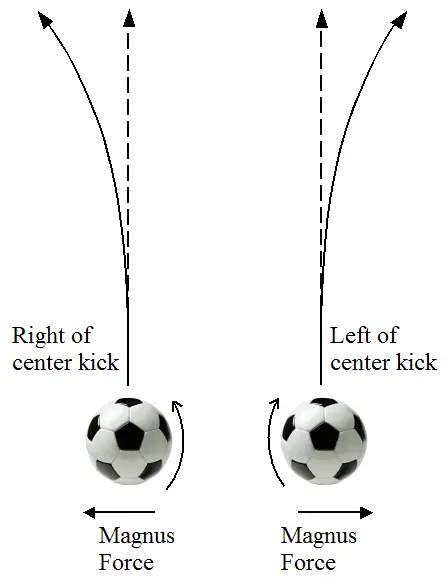
Small motors located in the ship’s hull power the rotor sails, and as they rotate, horizontal thrust is generated to push the ship forward. If the wind changes direction and hits the rotors in the opposite direction to their rotation, the ship reverses. But to avoid issues and make sure things are running smoothly, there’s a real-time control and monitoring system that is constantly measuring the conditions and adjusting the rotors.
A system like this isn’t meant to completely replace the need for fuel, but to augment it. The vessels still have engines and standard propulsion … kind of like hybrid cars. The big gain here is reduced fuel use, which can work for anything from passenger ships to bulk carriers. The system isn’t without some downsides though. Wind can blow from all directions and even highly tuned systems may not provide constant power and thrust, which would affect the fuel efficiency gains. Large and high rotor sails need to be used to move a large ship, so the use of this greener technology reduces space that could be used for cargo. 10
So, another wind power technology that’s been catching the eyes of freight shipping companies is wingsails, which is based on the same aerodynamic principles as airplane wings. Compared to traditional sails, wingsails have an airfoil shape, which provides more lift and a better lift-to-drag ratio.
In an airplane, for example, lift and drag are crucial for an airplane’s takeoff, cruising, and landing. The asymmetrical wing shape causes a difference in air velocity around it, forcing air to move faster across the top of the wing and making it lift up.
Bringing this concept to a ship, wingsails can improve the aerodynamic performance in a similar way, reducing drag and creating more forward thrust to move the vessel. 11

To do that there are three things to keep in mind: 1) drag is the force that’s contrary to the movement direction, 2) lift is the force that acts at a right angle to the direction of drag, and 3) thrust is the force needed to overcome the drag and to generate the lift force.
Similar to rotor sails, several factors like wind speed, ship speed and ship type have to be taken into consideration with wingsail technology, and a lot of planning and wind analysis needs to be performed so that everything can come together and work well.
No power is needed to produce lift, making this technology very efficient when sailing upwind. A pro of this tech is that the wingsails can be operated at a small angle towards the apparent wind, which is the wind you ‘feel’ on you as you sail, so that these sails can harness the wind basically all the time. However, similar to rotor sails, these airfoils take space that could be used for cargo. On the other hand, while Flettner rotors have to be laid down when the ship passes under a bridge, taking a lot of space, some airfoil technologies can be retracted. 12
There are several companies trying to bring these technologies to market, like the London-based company Anemoi, which is based on rotor sails technology. They build the rotor using lightweight composite materials and the tower made of steel. By using these components their system is typically less than 0.1% of the ship’s deadweight. Anemoi’s rotors can be moved or folded on the deck so that they don’t impact cargo operations.13
Regarding fuel savings, for Capesize bulk carriers that can carry 180,000 dwt (deadweight tonage), Anemoi estimates that when sailing a route from San Francisco to Shanghai and back, a 21.9% fuel and emission reduction can be achieved. More specifically 1,413 tons of fuel could be saved for this one ship every year.14
One project the company delivered in 2018 involved a 64,000 dwt Geared Ultramax Bulk Carrier, in which four rotor sails (2m x 16m) were installed. Something interesting to highlight is that the equipment installation took less than 2 hours per unit. Until last year, the ship sailed for 518 days, 174,000 NM, and visited 50 ports. All in, the savings estimate with fuel and carbon emission is 12.5% — 73 tons of fuel.15
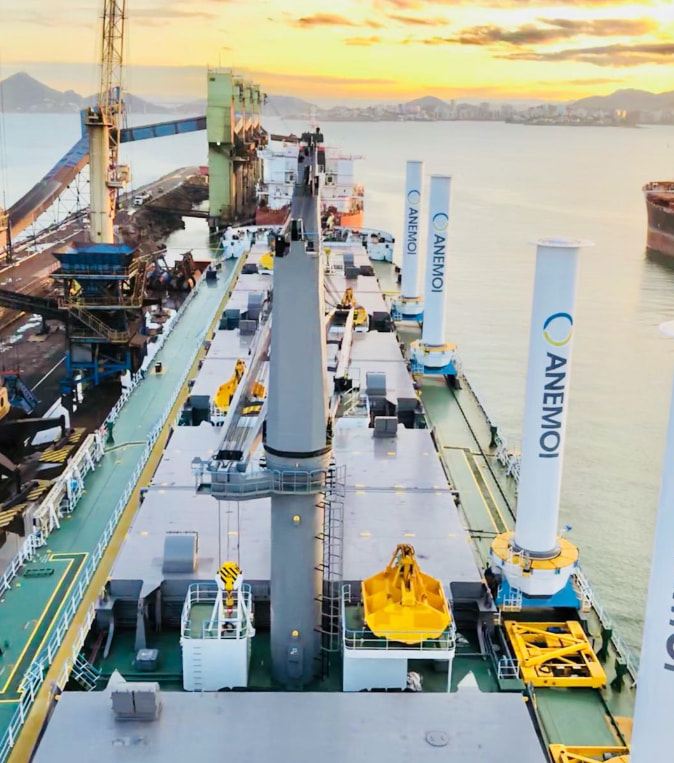
How does that work out for cost savings? Well, another company that’s also building out Flettner rotors is Norsepower.
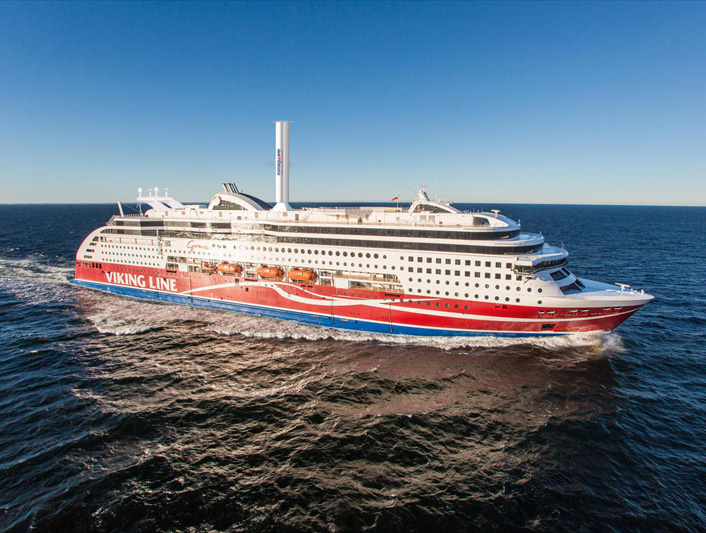
A study published in the Environmental Science and Pollution Research journal developed a case study for a carrier transporting coal, iron, ore, and grain sailing in a route from Egypt to France with four Flettner rotors from Norsepower, which is about $750,000 per rotor. 16 The study showed an average fuel saving of 1,693 tons/year (22.28% savings). By the end of the project’s lifetime, the annual fuel savings could reach $1.3 million. The payback period ranged from 6 to 8 years depending on fuel prices, and the LCOE after 8 years was $0.05/kWh. 17
Jumping over to wingsails, this technology is still at the early design stages, but the company Oceanbird is trying to bring it to market. The 80-meter-high wingsails are supposed to lower carbon emissions by 90% – which is hard to believe. For now, they’ve built a 7-meter scale ship to pull information together and improve its functionality. The company aims to deliver their first vessel in 2024, so it’s still a long way from fruition. 18 19

But BAR technologies, from the UK, is also developing wingsails for shipping. They’ve signed a contract with the agribusiness giant Cargill and are aiming to have the first vessels on the water by 2022. 20 21 While hybrid wind power systems look promising, they’re still in the pilot stages, which means we can’t rely on them as our only path forward.
Another area that’s getting a lot funding and attention are alternate fuels like ammonia and biofuels. Methanol has been considered, but it’s only green if it’s made from either biomass gasification or renewable electricity and captured carbon dioxide. Unfortunately, most methanol produced today is derived from fossil fuels. The same can be said of Ammonia, which is currently made from natural gas. But green ammonia can be produced using hydrogen from water electrolysis and nitrogen separated from the air, all using renewable energy. There is a potential path for cleaner fuel production there.
The shipping industry giant Maersk, for example, invested $1.4 billion on ships that can run on ‘carbon neutral’ methanol. The ships will be able to transport 16,000 containers. For that project, Denmark’s European Energy and its subsidiary, REintegrate, would produce 10,000 metric tons of green e-methanol per year to be used in the ships. And according to Maersk’s head of decarbonization, the ships would start operating in early 2024. 22
Ammonia, which is still a recent alternative, is also at the early design stages. South Korea’s Hyundai Heavy Industries, for example, has approval in principle (AiP) for a 227m long vessel running on ammonia that will be used to carry ammonia. Wärtsilä is another company betting on hydrogen and ammonia as a fuel for shipping. The company expects to have an engine and plant concept for pure hydrogen operation ready by 2025 and an engine running on an ammonia blend this year. 23 24
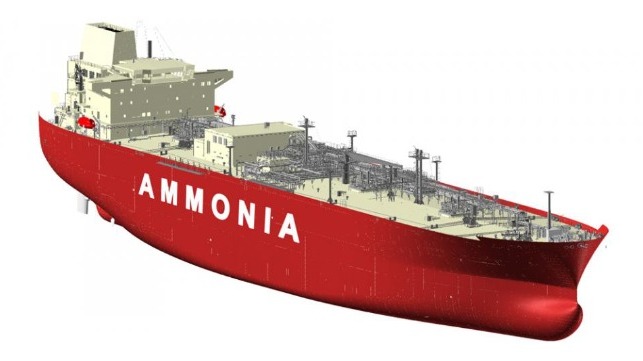
Even though we can see progress in green technologies for shipping, its low-carbon future is still growing at a slow pace. Wind power technologies are at the early stages, mainly wingsails, so more testing and design improvements are crucial to verify the viability of this tech in the long term, although the results are promising for rotor sails. Similarly, ammonia fuel cells and green methanol engines are still in the development stage for ships, with tests expected to run in the next few years. We’ve got a long way to go, but there is movement happening.
- Ammonia: A Sustainable Fuel Option For Shipping↩
- Reducing emissions from the shipping sector↩
- Shipping is tough on the climate and hard to clean up – these innovations can help cut emissions↩
- The Guardian – Health risks of shipping pollution have been ‘underestimated’↩
- History of ships↩↩
- History and Transition of Marine Fuel↩↩
- Modernizing the mechanical rotor sail↩
- FLETTNER ROTORS↩
- Flettner Rotor For Ships – Uses, History And Problems↩
- New York Post – LA port backup grows to record 62 ships as supply chain crunch worsens↩
- Wingsail technology as a sustainable alternative to fossil fuel↩
- New wing sail technology to be launched↩
- ↩
- Anemoi – Our in-house Fuel Saving Assessment↩
- Anemoi – m/v Afros↩
- Long-Term Test of Rotor Sail on Passenger Ferry Completed↩
- Harnessing wind energy on merchant ships: case study Flettner rotors onboard bulk carriers↩
- Wallenius Marine develops world’s largest wind-powered vessel to slash shipping emissions↩
- Oceanbird’s huge 80-meter sails reduce cargo shipping emissions by 90%↩
- Bulkers: major charterers push for greener tonnage↩
- Cargill and BAR Tech partner to reduce CO2↩
- Maersk spends $1.4 billion on ships that can run on ‘carbon neutral’ methanol↩
- Wärtsilä launches major test programme towards carbon-free solutions with hydrogen and ammonia↩
- HHI Received AiP for Ammonia Carrier with Ammonia Fuel Propulsion↩















Comments